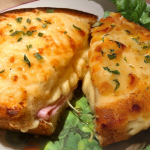Photo by Patrick Fore on Unsplash
What does it all mean? … The swirling, the smelling, the different descriptors… and why do people do it? Embark on this guided experience of a Spanish Rioja wine and you’ll see just how intriguing wine sensory can be. Really, there is more to it than just tasting. Are you ready?
Take a Look
Of all the human senses (sight, smell, taste, touch and sound), the first to be engaged, usually, is sight. So, this is where the experience will begin. Open your favorite bottle of Spanish Rioja. (If you don’t have one yet, ask the folks at your local wine and spirits shop – they’ll point you in the right direction.) Pour the wine into your glass until it’s about 1/4 filled.

Look at it and notice the color: ruby red and slightly opaque. Look at what happens when you swirl it. It creates “legs” that drip down the inside of the glass. It’s beautiful, right? Red incites feelings of passion, mystery, and intrigue.
Smell the Aromas
Now, give it another swirl and stick your nose in the glass. Take a deep whiff of the aromas. With Tempranillo (Rioja) you should smell dark red fruit, cherry perhaps, maybe some plum. That comes from the fruit — the grape after it has been fermented a bit. You’ll also smell something spicy, like pepper, and perhaps baking spices or vanilla. That comes from the oak barrel the wine was aged in. You may even smell something earthy, like leather or tobacco. You’ll smell that if it’s an older wine. These are the characteristics that emerge when Rioja ages a bit in the bottle.
Photo by Vinocultured
Taste and Feel
Now bring the glass to your lips and have a taste. Don’t swallow right away. Let the wine give you a mouth feel. Does it feel a bit thick? Perhaps a bit sticky on the tongue? That’s from the skins of the grapes that were allowed to ferment in the juices. It’s called “tannin.” The bigger, more robust red wines have this characteristic. Fermenting these bolder red wines in oak barrels actually help soften the tannin. The oak makes the wine less bitter and more palatable.
After you swallow and take a breath, you’ll start to taste the flavors of the wine. (Believe it or not, our nose plays an important role in tasting.) The flavors may mirror the aromas, or you may pick up something different or new. In the case of Tempranillo, perhaps you may taste something a bit herbal, or maybe even some chocolate.
After assessing the flavors, take a last sip and sense the burning sensation in your mouth. The greater the burn, the higher the alcohol content. Remember those legs you observed in the glass earlier? You may observe that the greater the burn, the thicker the legs, and vice versa.
A Total Sensory Experience
Do you know why we clink glasses when we drink? It’s so that all five senses are involved. We touch the glass, smell the drink, see its color, and taste it. Hearing is the only sense that doesn’t participate until we create a sound. So, don’t be shy about toasting to whatever moves you in the moment… “¡Salud!”
You now see that wine tasting isn’t just about the flavor, is it? Really, it is a total sensory experience. It engages all of your senses … provoking thoughts, inciting feelings, and inspiring the imagination. And each glass offers you something new to discover. Now that your senses are awakened, you’ll never drink wine the same way again. So, what do you think? Are you inspired?

Photo by Big Dodzy on Unsplash




